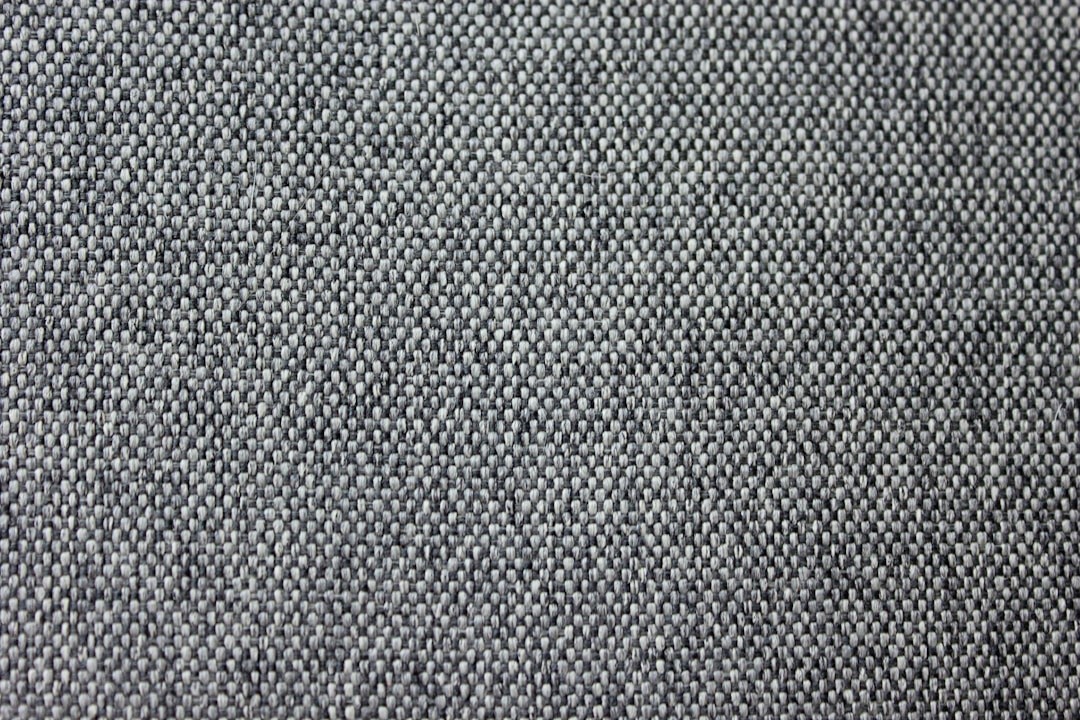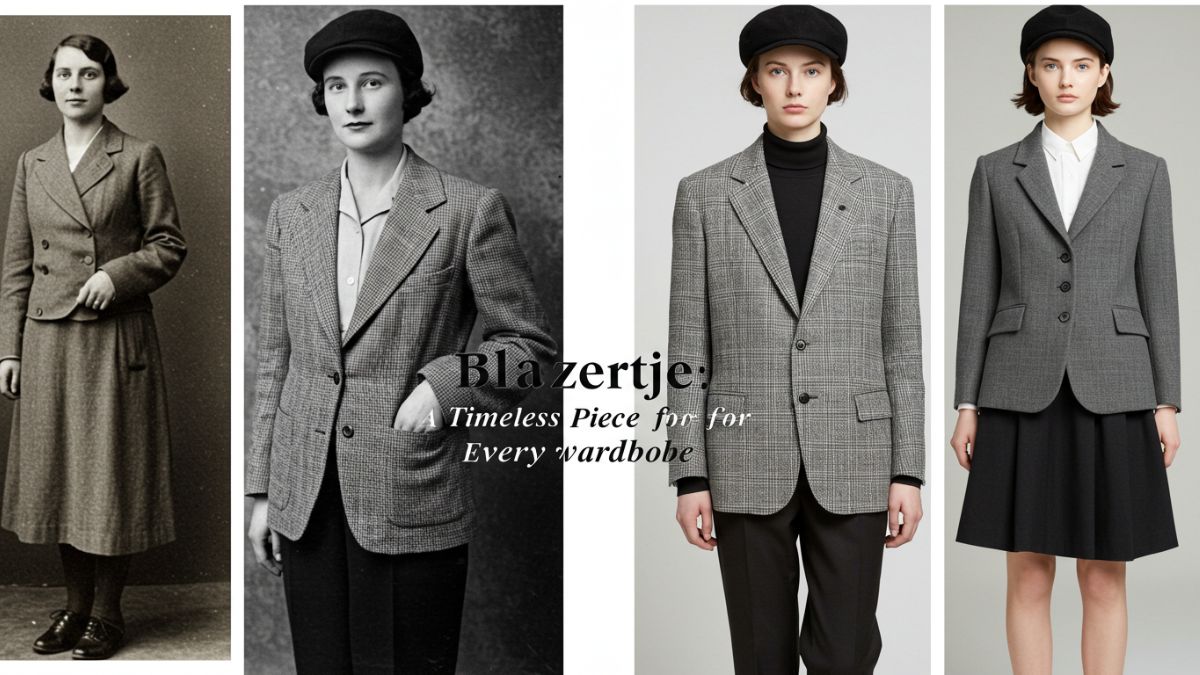FASHION
Men’s Pants: How To Find the Perfect Fit

Finding the ideal pants for men, or ‘pantalon pour homme‘ in French, is about more than just picking a style that appeals to you; it’s about comfort, functionality, and how they enhance your silhouette. The right pants can elevate your attire for a day at the office or a casual weekend getaway. Knowing how to navigate the sea of cuts, styles, and fabrics will empower you to step out looking your best. Keep reading for a comprehensive guide on mastering the art of selecting the perfect men’s pants.
The Role of Fabric and Cut in Achieving the Perfect Pants Fit
The fabric of the pants is just as important as the size. Different materials will drape and wear differently on the body. Natural fabrics like cotton or wool typically offer breathability and comfort, while synthetic materials such as polyester can provide stretch and durability. Choosing a fabric that aligns with your comfort preferences and the occasion for which the pants will be worn is essential.
The cut of the pants plays a pivotal role in how they fit and flatter your body. Slim cuts tend to conform more to the shape of your legs, offering a streamlined appearance, while more generous classic or relaxed cuts provide more room and ease of movement. Consider your body type and the desired final look when selecting a cut.
Special considerations should also be made for the weave of the fabric. A twill weave may give the pants a subtle texture and a sturdy feel, while a plain weave might be lighter and smoother. Additionally, the weight of the fabric will determine its seasonality and functional use; heavier materials may be ideal for colder climates, while lightweight fabrics are preferable in warmer conditions.
Do not overlook the importance of stretching within the fabric. Spandex or elastane incorporated within the fiber can increase comfort and flexibility, allowing the pants to maintain their shape with regular wear. This elasticity can be particularly beneficial in slim-fit or skinny styles that require extra give around the movement areas.
Identifying Common Fit Issues and How to Solve Them

Common fit issues can arise even with the correct waist and inseam measurements. One of the most typical problems is gaping at the waist, which can often be rectified with a well-chosen belt or alterations from a tailor. Keep an eye out for any excess fabric that bunches around the thighs or calves, which may indicate that the cut isn’t quite right for your body type.
Another common issue is the length of the pants. If pants are too long, they pool around your shoes, creating an unkempt and sloppy appearance. Conversely, pants that are too short can give the impression that you’ve outgrown them. A tailor can easily adjust the hem to the perfect length, which should gently graze the top of your shoes.
Furthermore, observe how the seat and thighs of the pants fit. A proper fit will lie smoothly against your body, without feeling tight or constricting. If there is pulling at the seams or discomfort when sitting, the pants might be too snug in these areas. Looseness, on the other hand, can make pants look baggy and ill-fitting.
Acknowledging your body’s unique shape is essential, as off-the-rack sizes may not accommodate every nuance. For example, men with muscular thighs may need a larger size, and then the waist should be tailored for a consistent fit throughout. Understanding these nuances allows for better choices and ultimately, a better fit.
The Importance of Tailoring in Personalizing Fit
Even the highest quality pants can benefit from the precision of tailoring. A tailor can take a pair of standard pants and adjust them to your exact measurements, transforming them from mundane to magnificent. Tailoring is crucial for dress pants or suits; a precise fit is necessary for a polished look.
Considerations such as the break—or how much of the pant leg rests on the shoe—can be customized to your preference by a tailor. A full break, half break, or no break can significantly influence the overall style of the pants. Working with a tailor gives you control over these small yet impactful details.
Tailoring doesn’t only apply to length and waist adjustments. A tailor can also alter the pants’ taper or take in too loose areas. These adjustments ensure the pants compliment your shape and give off the desired aesthetic, whether professional, casual, or anywhere between.
Overall, the journey to finding the perfect fit for men’s pants includes choosing the right fabric and cut, identifying and addressing fit issues, and advocating for tailoring. With proper care and maintenance, your perfectly fitting pants can remain a staple in your wardrobe for years.
FASHION
An Important Discussion on Mens Suits Styles, from Clothing Styles to Color Combinations

When it comes to timeless fashion staples, mens suits hold an undisputed place at the top. From boardrooms to weddings, a well-tailored suit has the power to instantly elevate a man’s presence. While the concept of a suit might sound simple—jacket, trousers, and shirt—the world of men’s suits is rich with variety, offering endless style options, fits, fabrics, and color combinations. Understanding these nuances helps men dress confidently, whether it’s for formal occasions, professional events, or casual gatherings.
The Classic Suit: A Wardrobe Essential
The traditional mens suits has remained unchanged for decades because of its elegance and versatility. It typically consists of a single-breasted jacket, matching trousers, and sometimes a waistcoat. This ensemble works as a foundation piece, adaptable with different shirts, ties, and accessories.
Men often underestimate the importance of investing in at least one high-quality classic suit, usually in navy or charcoal. These colors are versatile enough to wear at weddings, interviews, or client meetings without ever looking out of place.
Exploring Different Mens Suit Styles
1. Single-Breasted Suits
The most common style, featuring a jacket with one column of buttons and a narrow overlap of fabric. Best for everyday wear and highly versatile.
2. Double-Breasted Suits
A bolder choice, double-breasted suits feature extra fabric overlap and two parallel rows of buttons. They exude power and sophistication, making them a favorite among fashion-forward men.
3. Three-Piece Suits
This includes a vest (waistcoat) along with the jacket and trousers. Three-piece suits are perfect for weddings, formal dinners, and events where you want to make a lasting impression.
4. Slim-Fit Suits
Tailored close to the body, slim-fit suits are popular among younger men and those who prefer a modern, sleek silhouette.
5. Classic-Fit Suits
Comfort-driven, with more room in the chest and legs, ideal for men who prioritize mobility without compromising style.
Fabric Choices: The Foundation of a Great Suit
Your choice of fabric sets the foundation for how sharp and comfortable your suit will look. Common options include:
- Wool – Timeless, breathable, and suitable for year-round wear.
- Cotton – Light and airy, best for warm climates.
- Linen – Great for summer; lightweight but prone to wrinkles.
- Velvet – A bold choice for evening parties or tuxedo-style suits.
The right fabric also depends on climate and occasion. For instance, wool suits are versatile for all seasons, while linen is a perfect choice for summer weddings or beach events.
Color Combinations That Work Best for Mens Suits
A suit is incomplete without the right color scheme. Here are some tried-and-true combinations:
- Navy Blue Suit with White Shirt & Burgundy Tie – A go-to look for business meetings.
- Charcoal Suit with Light Blue Shirt & Black Tie – Sleek and professional.
- Beige or Tan Suit with White Shirt & Brown Shoes – Perfect for daytime summer events.
- Black Suit with Crisp White Shirt & Black Tie – Classic and ideal for formal occasions.
- Grey Suit with Pastel Shirt & Patterned Tie – Adds character while maintaining sophistication.
Accessories like pocket squares, cufflinks, and watches can further enhance these looks, allowing personal expression within traditional rules.
Occasion-Specific Suit Styling
- Business Suits – Stick to darker shades like navy, charcoal, and black with minimal patterns.
- Wedding Suits – Experiment with lighter tones, tuxedos, or three-piece suits for elegance.
- Casual Suits – Pair lighter colors with patterned shirts and skip the tie for a laid-back look.
- Evening/Formal Suits – Go for black or midnight blue, often styled with a bow tie.
The Role of Fit in Mens Suits
A well-fitted suit is the ultimate confidence booster. The shoulders of the jacket should align perfectly, the sleeves should end just above the wrist bone, and trousers should break slightly above the shoes. Even the finest suit will look unpolished if it doesn’t fit correctly.
This is why tailoring is key. Off-the-rack suits may need adjustments to achieve the perfect look. Investing in alterations ensures your suit complements your body shape.
Why Invest in Quality Mens Suits?
While cheaper suits might seem tempting, quality suits last longer, look sharper, and maintain structure over time. High-end suits are also made with better stitching, fabrics, and detailing, making them worth the investment.
For men looking to expand their wardrobe with timeless and stylish pieces, exploring a well-curated suit collection offers a wide variety of options for every occasion—from business meetings to weddings
Conclusion: Dressing with Confidence
Mens suits are more than just clothing—they’re a symbol of style, sophistication, and self-expression. With endless choices in style, fit, fabric, and color, there’s a perfect suit for every man and every occasion. By understanding the nuances of suit styles and combinations, men can dress with confidence and elevate their presence wherever they go.
FASHION
Blazertje: A Timeless Piece for Every Wardrobe

When it comes to clothing that strikes the right balance between casual and formal, the blazertje stands out as a true fashion essential. Unlike fleeting trends, this piece has remained relevant for decades thanks to its adaptability and timeless design. Whether you are attending a business meeting, enjoying a casual lunch, or preparing for a night out, a blazertje can instantly elevate your look without much effort.
This article dives into the story, appeal, and modern relevance of the blazertjes, along with practical tips on styling and choosing the right one for your needs.
The Origins of the Blazertje
The blazertje did not start as a mainstream fashion item. Its early form resembled structured jackets worn by naval officers in Europe. As tailoring techniques evolved, designers began refining the garment, giving it softer lines and wider versatility. By the 20th century, the blazertje transitioned from being part of uniforms to becoming a fashion-forward jacket worn in social and professional settings.
Today, it is no longer confined to men’s wardrobes; it is equally embraced in women’s fashion, often redesigned with unique cuts, fabrics, and colors to suit modern tastes.
Why the Blazertje Deserves a Place in Your Closet
1. A Style Chameleon
Few garments can match the adaptability of a blazertje. It can be paired with jeans for an everyday look, layered over dresses for evening elegance, or worn with trousers in corporate settings.
2. Comfort with Elegance
Modern blazertjes are crafted from fabrics that offer breathability and flexibility. Unlike stiff jackets of the past, today’s versions allow you to move comfortably while still looking polished.
3. Perfect for All Seasons
From lightweight linen blazertjes ideal for summer evenings to wool blends that keep you warm in winter, this jacket has seasonal versatility.
4. Gender-Neutral Appeal
The blazertje has blurred the lines of gendered fashion. It looks just as stylish on men as it does on women, making it one of the most inclusive fashion items.
Popular Variations of the Blazertje
Fashion designers have continually reimagined the blazertje, giving rise to different styles:
-
Classic Cut – A sleek, tailored version that fits perfectly in business environments.
-
Oversized Blazertje – Popular in streetwear and casual fashion, often styled with sneakers and denim.
-
Double-Breasted Design – Known for its bold button placement, this variation conveys authority and style.
-
Printed or Patterned Styles – Checks, stripes, and bold patterns for those who enjoy making statements.
-
Casual Fabrics – Cotton, linen, and even denim blazertjes designed for everyday wear.
Styling Ideas with a Blazertje
For Women
-
Office Ready: Pair a black blazertje with slim trousers and pumps.
-
Weekend Casual: Style a pastel-colored blazertje with denim shorts and sandals.
-
Evening Glam: Add a fitted blazertje over a silk dress for a chic night look.
For Men
-
Business Formal: Combine a navy blazertje with a crisp white shirt and tailored pants.
-
Smart Casual: Wear a beige blazertje with chinos and loafers for an effortless vibe.
-
Relaxed Style: Throw a casual blazertje over a t-shirt with sneakers for a modern twist.
The Blazertje in Today’s Fashion Scene
Runways and high-street brands frequently showcase the blazertje because of its universal appeal. Celebrities often sport them at red-carpet events, while influencers highlight them as everyday staples in street style. The surge of sustainable fashion has also influenced the production of blazertjes, with eco-friendly fabrics and ethical tailoring gaining popularity.
What makes the blazertje special is its ability to evolve. Whether oversized, cropped, or paired with bold accessories, it continues to adapt to changing fashion trends while maintaining its core elegance.
Choosing the Right Blazertje
When buying a blazertje, keep the following tips in mind:
-
Fit Matters: Tailored versions sharpen your silhouette, while oversized ones work better for relaxed styles.
-
Color Selection: Neutral shades like black, navy, and beige are versatile; bold hues add personality.
-
Fabric Choice: Choose breathable materials like cotton or linen for summer, and wool blends for winter.
-
Purpose: Consider the occasion—formal meetings require structured blazertjes, while casual outings allow experimentation.
Caring for a Blazertje
A blazertje is an investment piece, and proper care ensures its longevity:
-
Store on sturdy hangers to maintain shape.
-
Follow washing instructions—many high-quality versions need dry cleaning.
-
Steam rather than iron to keep the fabric smooth.
-
Rotate usage to prevent fabric wear.
Why the Blazertje Stays Relevant
Fashion is known for constant change, but the blazertje remains a permanent resident in wardrobes worldwide. Its relevance comes from its versatility, inclusivity, and ability to balance casual and formal wear. While trends may shift from skinny jeans to wide-leg pants or from crop tops to oversized shirts, the blazertje continues to complement all styles.
It isn’t just clothing; it represents confidence, adaptability, and timeless appeal.
Conclusion
The blazertje has journeyed from naval uniforms to high-fashion runways, proving that true style never fades. It has become a universal wardrobe staple because of its unmatched versatility, comfort, and ability to adapt to personal fashion preferences. Whether you want to dress up for work, keep things casual, or make a bold statement, the blazertje will always have your back.
FASHION
Growing Smarter: Proven Strategies for Greenhouse Success

A greenhouse offers growers the unique advantage of creating a controlled environment for year-round cultivation. Whether you’re a hobbyist or a commercial grower, success in greenhouse gardening depends on much more than just setting up a structure and planting seeds. It requires intentional planning, environmental control, and strategic decision-making. Here are some proven strategies to help you grow smarter and get the most out of your greenhouse.
1. Start with a Solid Plan
Before you plant a single seed, have a clear plan for what you want to grow, when you want to harvest, and how you’ll manage your greenhouse. Think about your space, climate, resources, and goals. Are you growing for personal use, farmers markets, or a larger commercial operation? These answers will guide your decisions on layout, equipment, and planting schedules.
Sketch out a seasonal crop rotation plan to avoid overtaxing your soil and to manage pests naturally. Planning also helps optimize yield by maximizing space and avoiding overcrowding.
2. Master Climate Control
One of the greatest benefits of greenhouse gardening is the ability to control the internal climate to suit plant needs. Managing temperature, humidity, and airflow is essential for maintaining healthy crops and maximizing productivity. To keep conditions consistent, install accurate monitoring tools such as a thermometer and hygrometer and check them daily.
Effective climate control strategies include:
- Ventilation: Use vents, exhaust fans, or circulation fans to maintain steady airflow. This helps regulate temperature, prevents overheating, and reduces the risk of fungal diseases.
- Heating: In colder regions or during winter, consider space heaters, radiant heating systems, or passive solar methods to keep the greenhouse warm enough for plant growth.
- Shading: During peak summer heat, apply shade cloths or whitewash the greenhouse roof to protect plants from sunburn and heat stress.
- Humidity Control: Excess humidity can lead to mold, mildew, and disease outbreaks. Installing an industrial dehumidifier can help maintain ideal humidity levels, especially in larger or commercial greenhouses. It ensures a more stable environment and promotes healthier, more vigorous plant growth.
Maintaining consistent climate conditions is critical—sudden spikes or drops in temperature or humidity can shock plants, disrupt growth cycles, and compromise your harvest.
3. Maximize Natural Light
Light is essential for photosynthesis and healthy plant development. Position your greenhouse so it receives maximum sunlight throughout the day, typically with an east-west orientation. Keep windows and coverings clean to avoid light obstruction.
For regions with limited sunlight during winter, consider supplementing with grow lights. LED lights are energy-efficient and provide the full spectrum of light needed for plant growth. Proper lighting ensures strong, healthy plants regardless of the season.
4. Choose the Right Growing Medium
Healthy roots mean healthy plants. Depending on your setup, you might choose soil-based gardening, hydroponics, or a combination of both.
- Soil gardening requires well-draining, nutrient-rich soil. Regularly test the pH and nutrient levels to maintain balance.
- Hydroponic systems allow for soil-free growing and offer faster growth rates but require careful monitoring of nutrient solutions and water pH.
Regardless of method, always ensure your plants have access to the right balance of nutrients, water, and oxygen.
5. Implement Smart Irrigation
Overwatering is a common greenhouse mistake. Install a drip irrigation system or soaker hoses to deliver water directly to plant roots. These methods reduce water waste, prevent disease caused by wet foliage, and ensure consistent moisture.
Add timers or moisture sensors for even greater precision. Monitoring soil moisture levels before watering helps avoid both underwatering and overwatering, ensuring plants get just what they need.
6. Practice Integrated Pest Management (IPM)
Pests can still find their way into greenhouses, and chemical treatments may harm both plants and the environment. Integrated Pest Management (IPM) uses a combination of strategies to prevent and control infestations.
Tactics include:
- Introducing beneficial insects like ladybugs or predatory mites
- Using insect barriers or netting
- Rotating crops and removing plant debris to deter pests
- Applying organic sprays like neem oil when necessary
IPM promotes a balanced ecosystem inside your greenhouse, reducing dependency on harsh chemicals.
7. Monitor and Record Everything
Keeping a logbook of planting dates, growth observations, environmental conditions, and pest issues can be incredibly helpful. Over time, this data allows you to spot trends, adjust strategies, and make informed decisions.
Use digital tools or greenhouse management apps to automate this tracking. With better insight, you’ll improve crop timing, boost yields, and reduce waste.
8. Stay Adaptable and Keep Learning
Greenhouse gardening is both a science and an art. No two seasons are exactly the same, and new challenges often arise. Stay open to experimenting with different crops, techniques, and tools.
Join local gardening groups, attend workshops, or follow greenhouse experts online. Continued learning ensures you stay ahead of trends and discover better, more efficient ways to grow.
In Conclusion
Success in the greenhouse doesn’t happen by chance—it’s built on smart, strategic practices. By planning ahead, managing your environment, and continuously learning, you can unlock the full potential of your greenhouse and enjoy bountiful harvests year-round. Whether you’re growing leafy greens, juicy tomatoes, or exotic flowers, applying these proven strategies will help you grow smarter and achieve lasting success.
-

 GENERAL2 years ago
GENERAL2 years agoDiscovering the Artistic Brilliance of Derpixon: A Deep Dive into their Animation and Illustration
-

 Posts2 years ago
Posts2 years agoSiegel, Cooper & Co.
-

 Lifestyle2 years ago
Lifestyle2 years agoPurenudism.com: Unveiling the Beauty of Naturist Lifestyle
-

 HEALTH2 years ago
HEALTH2 years agoTransformative Health Solutions: Unveiling the Breakthroughs of 10x Health
-

 FASHION2 years ago
FASHION2 years agoThe Many Faces of “λιβαισ”: A Comprehensive Guide to its Symbolism in Different Cultures
-

 Lifestyle2 years ago
Lifestyle2 years agoBaddieHub: Unleashing Confidence and Style in the Ultimate Gathering Spot for the Baddie Lifestyle
-

 Entertainment2 years ago
Entertainment2 years agoGeekzilla Podcast: Navigating the World of Pop Culture, Gaming, and Tech
-

 Lifestyle1 year ago
Lifestyle1 year agoSandra orlow: Unraveling the Story of an Iconic Figure
